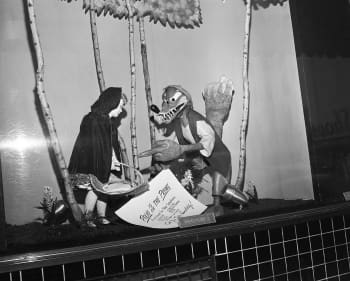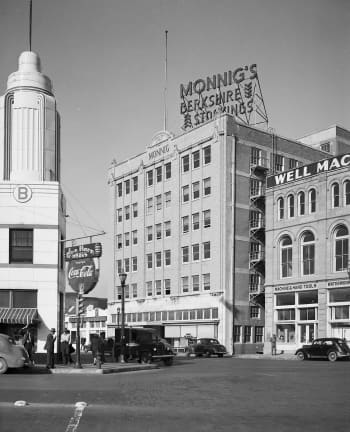From the stars to Fort Worth
How a world-class meteorite collection landed at TCU
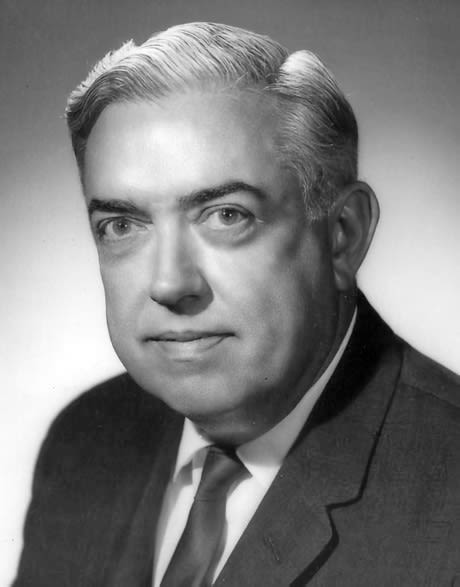
When the phone in his office rang, he didn’t think twice as he reached to answer it. Dr. Ken Morgan was chair of the geology department at TCU. He was used to routine calls.
This one wasn't routine.
A bank employee told him Oscar Monnig had passed away, then asked Morgan to come to Monnig’s home — immediately.
To longtime Fort Worth residents, the Monnig name is likely familiar.
Oscar Monnig’s father, William, and uncle co-founded a dry goods business that grew into a successful chain of department stores. At its peak, Monnig’s Department Store was a Fort Worth staple, with six locations across the city before closing in 1990.
Today, William Monnig’s legacy continues through the middle school that bears his name.
Oscar Monnig graduated as valedictorian of Fort Worth Senior High School, now R.L. Paschal High School, before attending the University of Texas. After earning his degree in 1925, he returned home to practice law for several years, eventually joining the family business in 1928. He remained with the company for the rest of his career, helping it expand and later serving as CEO.
Dr. Ken Morgan in his office. (Photo courtesy of Dr. Morgan)
Dr. Ken Morgan in his office. (Photo courtesy of Dr. Morgan)
Monnig's Department Store was a major retail presence in North Texas, with locations throughout Fort Worth, including Westcliff, Ridglea and downtown. The Monnigs became one of the city's most prominent families, recognized for their contributions to both business and philanthropy.
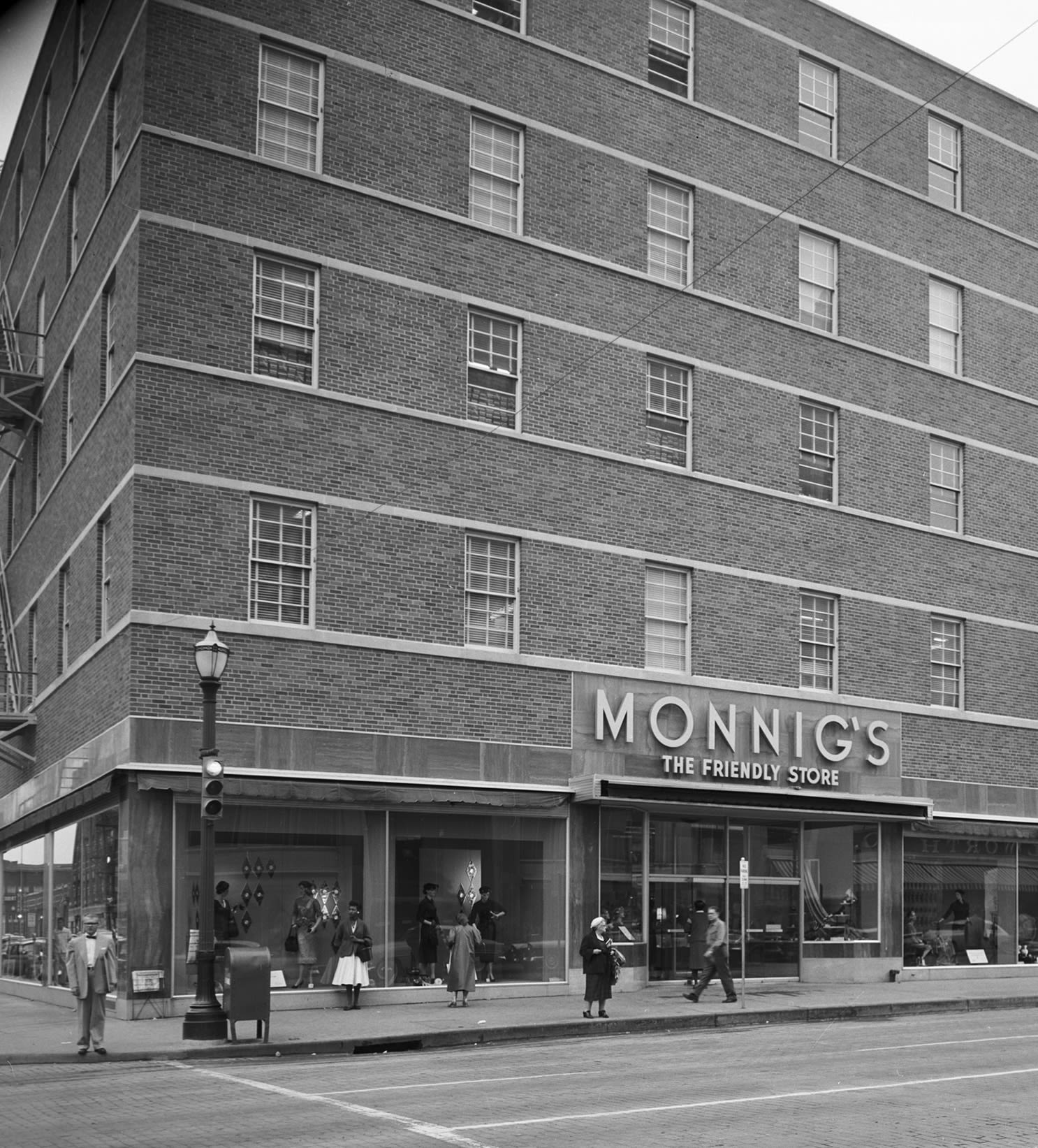
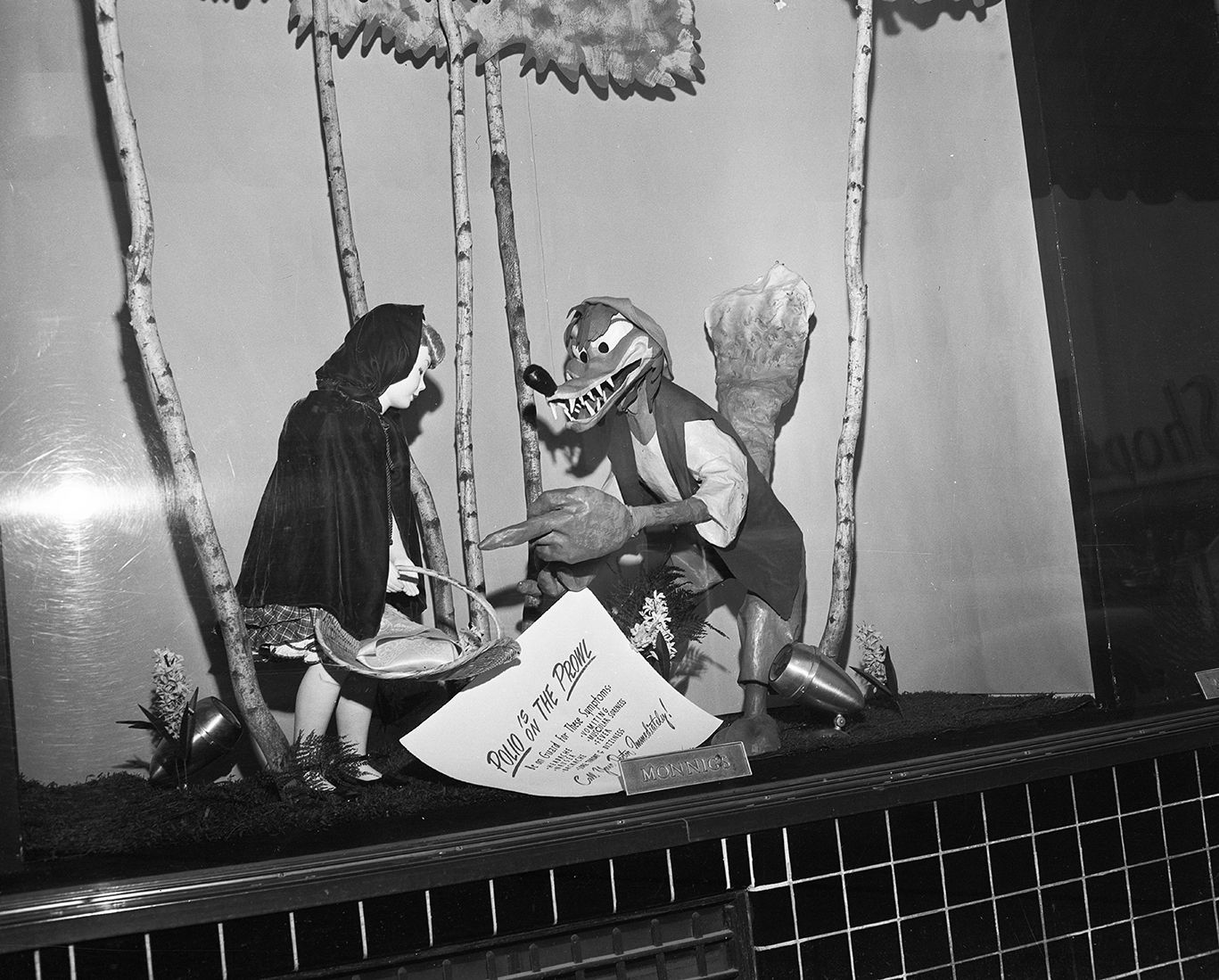
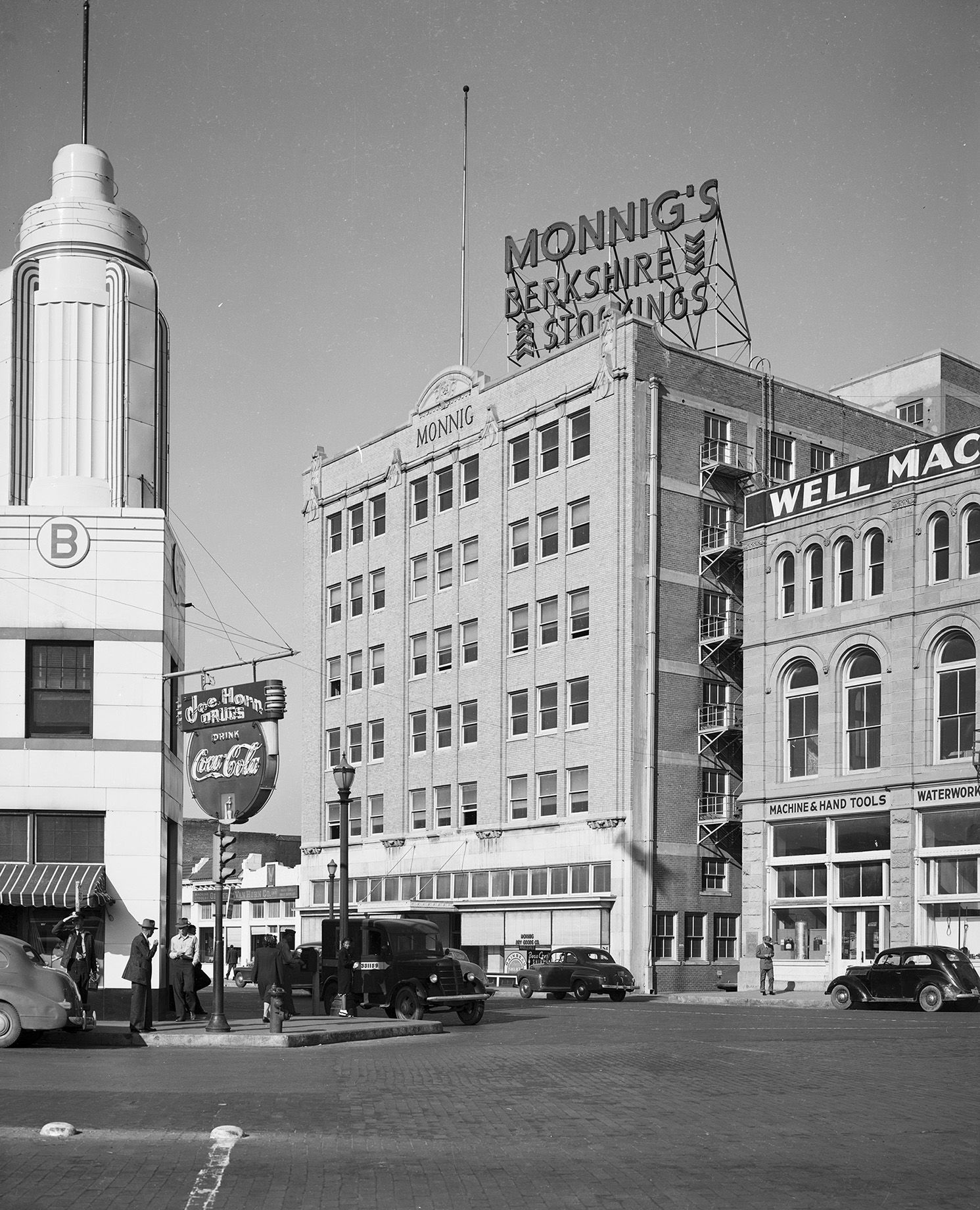
William Monnig. (Original image part of the Fort Worth Star-Telegram Collection, University of Texas at Arlington Libraries.)
William Monnig. (Original image part of the Fort Worth Star-Telegram Collection, University of Texas at Arlington Libraries.)
Mr. and Mrs. William Monnig celebrate their 50th wedding anniversary. (Original image part of the Fort Worth Star-Telegram Collection, University of Texas at Arlington Libraries.)
Mr. and Mrs. William Monnig celebrate their 50th wedding anniversary. (Original image part of the Fort Worth Star-Telegram Collection, University of Texas at Arlington Libraries.)
Monnig family registers for a formal dedication of William Monnig Junior High School. (Original image part of the Fort Worth Star-Telegram Collection, University of Texas at Arlington Libraries.)
Monnig family registers for a formal dedication of William Monnig Junior High School. (Original image part of the Fort Worth Star-Telegram Collection, University of Texas at Arlington Libraries.)
Meteorites: A passion that came from the stars
Monnig had no formal scientific training. He enrolled in an astronomy course at the University of Texas, but it was canceled due to low enrollment.
But that didn’t stop Monnig. In the 1930s, he founded the Texas Observers astronomy club and began collecting meteorites. He traveled to fall sites, handed out brochures explaining how to identify meteorites and offered to buy them by the pound. To encourage future finds, he often purchased duplicates, never wanting to discourage someone from bringing him a rock that just might be from space.
Oscar Monnig points out star positions to junior astronomers at Fort Worth Children's Museum. (Original image part of the Fort Worth Star-Telegram Collection, University of Texas at Arlington Libraries.)
Oscar Monnig points out star positions to junior astronomers at Fort Worth Children's Museum. (Original image part of the Fort Worth Star-Telegram Collection, University of Texas at Arlington Libraries.)
Oscar Monnig with his telescope outside of his home. (Original image part of the Fort Worth Star-Telegram Collection, University of Texas at Arlington Libraries.)
Oscar Monnig with his telescope outside of his home. (Original image part of the Fort Worth Star-Telegram Collection, University of Texas at Arlington Libraries.)
Cover of brochure Oscar distributed about meteorite identification. (Photo courtesy of Monnig Collection)
Cover of brochure Oscar distributed about meteorite identification. (Photo courtesy of Monnig Collection)
Meteorites are space rocks that have traveled through Earth's atmosphere. They are pieces of asteroids, comets or other space bodies.
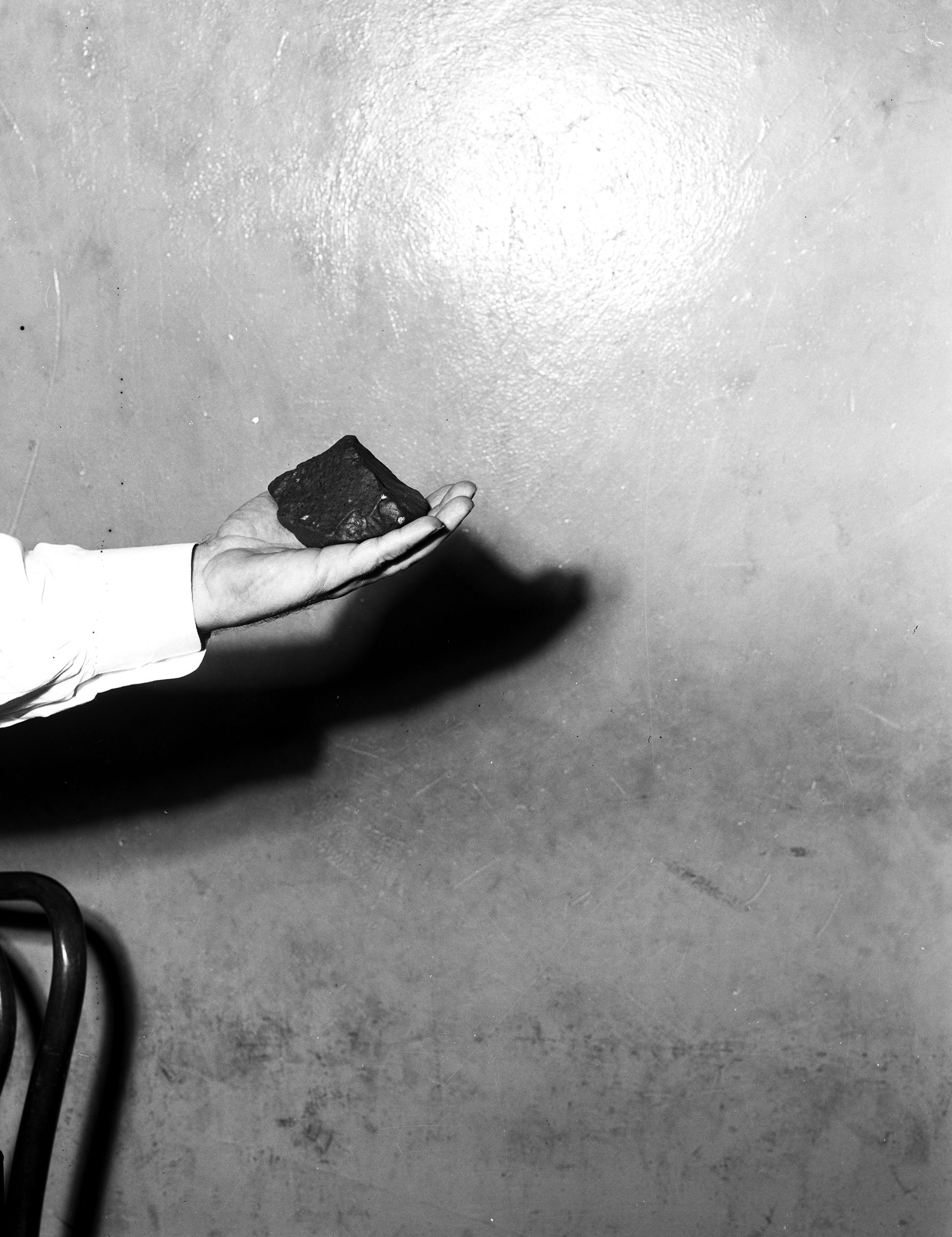
In the early 1960s Monnig was given a rock that turned out not to be a meteorite. His search to find someone who could tell him what it was led him to the home of Dr. Art Ehlmann, a geologist who had recently been hired at TCU.
Ehlmann was mowing his lawn when a well-dressed Monnig pulled up.
“Are you the new ‘rock man’ at TCU?” Ehlmann recounted in his essay, “My Friend Oscar Monnig,” which is included in "The Oscar E. Monnig Meteorite Collection Catalog."
“The greatest geological Easter egg hunt ever.”
After Monnig’s death, Ehlman and Dr. Nowell Donovan were also summoned to Monnig’s modest south Fort Worth home.
Before his death, Monnig had hinted at the possibility of leaving his meteorite collection to TCU, along with some financial support.
But what the three men learned was staggering.
Monnig had left not just his lifetime collection of meteorites, but his entire estate to the TCU geology department.
Dr. Art Ehlmann. (Photo courtesy of Ehlmann family)
Dr. Art Ehlmann. (Photo courtesy of Ehlmann family)
Dr. Nowell Donovan. (Photo courtesy of TCU)
Dr. Nowell Donovan. (Photo courtesy of TCU)
Meteorite a part of Monnig collection. (Photo courtesy Monnig Collection)
Meteorite a part of Monnig collection. (Photo courtesy Monnig Collection)
Meteorite a part of Monnig collection. (Photo courtesy Monnig Collection)
Meteorite a part of Monnig collection. (Photo courtesy Monnig Collection)
Morgan tells the story with detail and wonder, as if it's some sort of urban legend.
Meteorites were not just kept in the Monnig residence; they decorated it.
Along the walkway, ordinary-looking rocks were tucked neatly into the landscape, except these weren’t just rocks.
“He had them lined up like steppingstones,” Morgan said. “Little retaining walls around flowerbeds made entirely of meteorites.”
The shed contained crates upon crates of space rocks, each unique and documented. Living room drawers flung open to reveal more.
One meteorite, which was about the size of a small watermelon, was beside the mailbox. The large brown rock wasn’t much to look at. Just a dusty, unremarkable lump that never caught the eye of the mail carrier or a passerby.
That unremarkable lump would go on to be sold to a group of German scientists for half a million dollars.
Despite calls from the Smithsonian requesting ownership, TCU kept the meteorites. The funding received from the state would be used to create a display worthy of the world-class collection.
The Monnig Meteorite Gallery opened in 2003, tucked away inside Sid Richardson Science Building, which is known for its low ceilings, winding hallways and twisting stairwells.
Visitors can step into what Dr. Tim McCoy, curator of meteorites at the Smithsonian, has called "a true treasure for TCU."
“It is certainly the best meteorite museum at any university in the world.”
Dr. Rhiannon Mayne, now the curator of the Monnig Gallery, first heard about the position in 2008 from McCoy, who had been her postdoctoral advisor. For her, the memory is still vivid.
“We were on a walk,” Mayne said. “We'd probably gone to get snacks, and he said to me, ‘Your job has been advertised.’ And I was like, ‘What are you talking about?’ And he said, ‘There's a job coming up at Texas Christian University, and it's your job.’”
It was. And it still is.
“I can put Mars in one hand and moon in the other, and there's just something awe inspiring about that for most people,” Mayne said.
Now, as both a professor and curator, Mayne continues to expand the collection that started because of one man's lifelong hobby.
Dr. Rhiannon Mayne. (Photo courtesy of TCU Magazine)
Dr. Rhiannon Mayne. (Photo courtesy of TCU Magazine)
Monnig Meteorite Gallery. (Bailey Bates/Staff Photographer)
Monnig Meteorite Gallery. (Bailey Bates/Staff Photographer)
Dr. Ehlmann in the gallery. (Photo courtesy of Meteorite Times Magazine)
Dr. Ehlmann in the gallery. (Photo courtesy of Meteorite Times Magazine)
Monnig Meteorite Gallery. (Bailey Bates/Staff Photographer)
Monnig Meteorite Gallery. (Bailey Bates/Staff Photographer)
Monnig Meteorite Gallery. (Bailey Bates/Staff Photographer)
Monnig Meteorite Gallery. (Bailey Bates/Staff Photographer)
Monnig Meteorite Gallery. (Bailey Bates/Staff Photographer)
Monnig Meteorite Gallery. (Bailey Bates/Staff Photographer)
Monnig Meteorite Gallery. (Bailey Bates/Staff Photographer)
Monnig Meteorite Gallery. (Bailey Bates/Staff Photographer)
Monnig Meteorite Gallery. (Bailey Bates/Staff Photographer)
Monnig Meteorite Gallery. (Bailey Bates/Staff Photographer)
Monnig Meteorite Gallery. (Bailey Bates/Staff Photographer)
Monnig Meteorite Gallery. (Bailey Bates/Staff Photographer)
Monnig Meteorite Gallery. (Bailey Bates/Staff Photographer)
Monnig Meteorite Gallery. (Bailey Bates/Staff Photographer)
Monnig Meteorite Gallery. (Bailey Bates/Staff Photographer)
Monnig Meteorite Gallery. (Bailey Bates/Staff Photographer)
Monnig Meteorite Gallery. (Bailey Bates/Staff Photographer)
Monnig Meteorite Gallery. (Bailey Bates/Staff Photographer)
Monnig Meteorite Gallery. (Bailey Bates/Staff Photographer)
Monnig Meteorite Gallery. (Bailey Bates/Staff Photographer)
Monnig Meteorite Gallery. (Bailey Bates/Staff Photographer)
Monnig Meteorite Gallery. (Bailey Bates/Staff Photographer)


